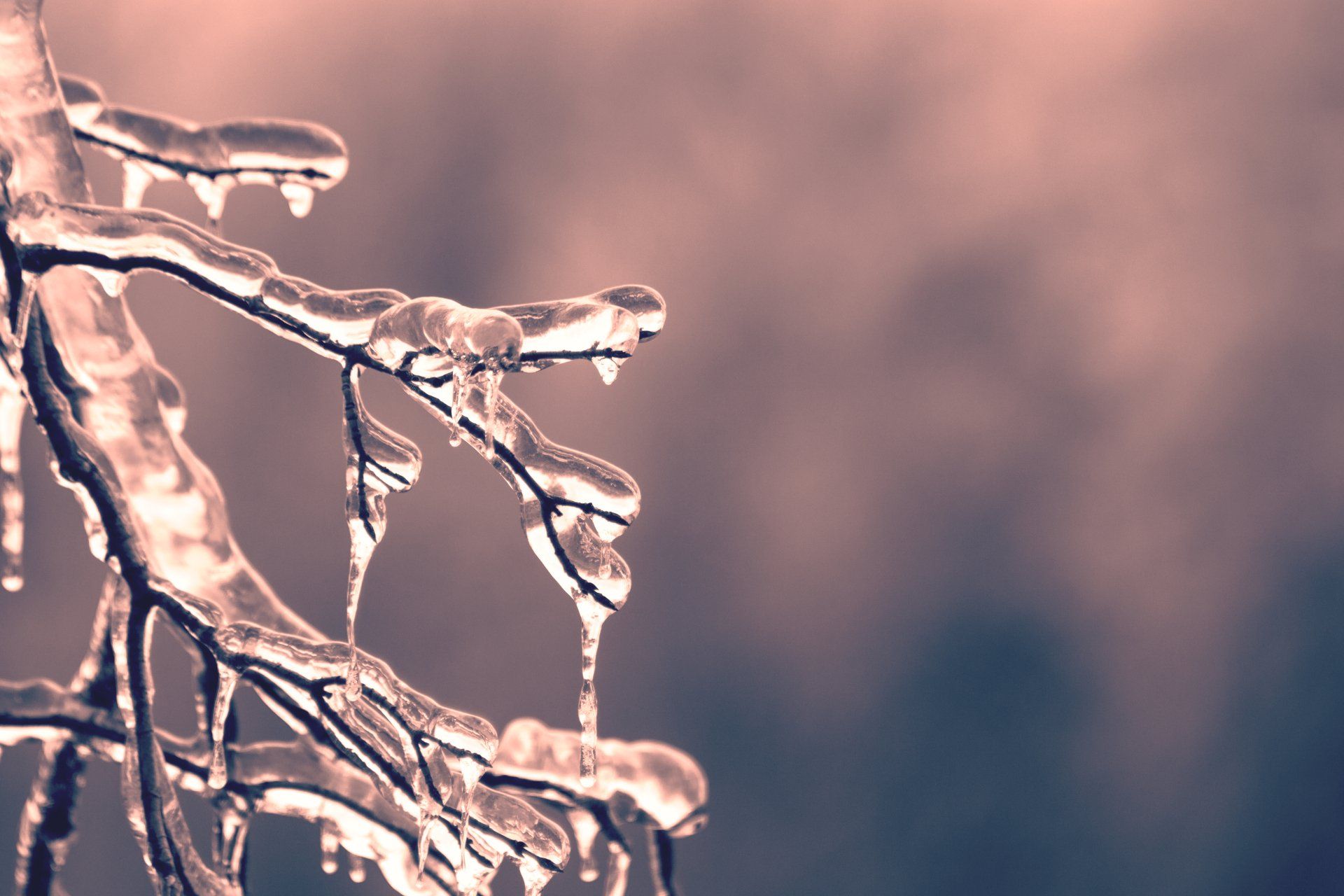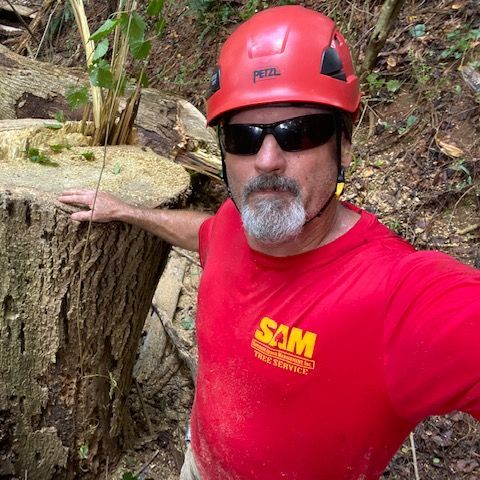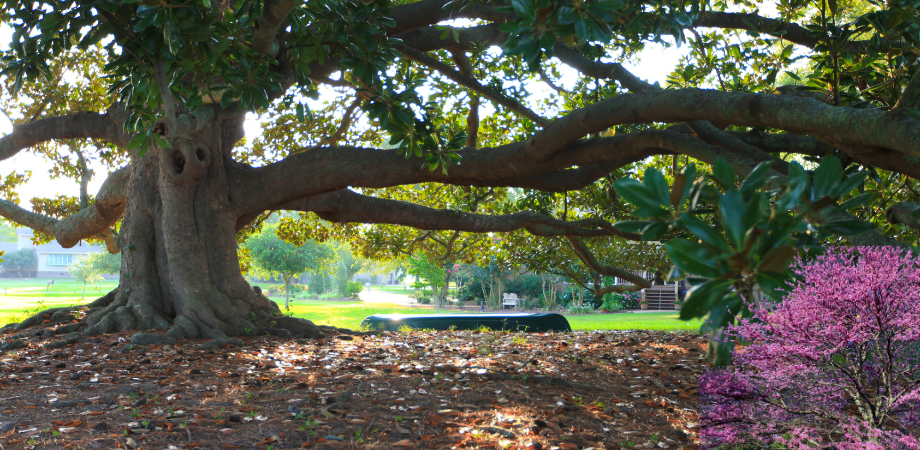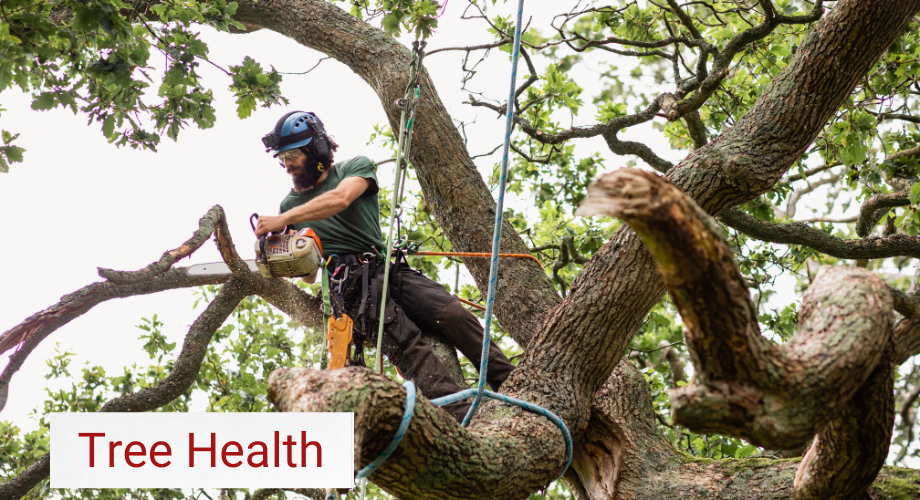Possible Damage That Occurs to Trees During Winter

Winter can be incredibly harsh on your outdoor space, leaving plants and decorations in bad space come spring. However, many people tend to overlook potentially catastrophic damage done to their trees. Winter weather can bring about many different issues for trees including low-temperature root damage and limb breakage. Here at SAM, our tree service experts know all of the tricks of the trade to keep your trees–and your house–safe during the winter.
Low-Temperature Root Damage
Low-temperature root damage is a particularly significant concern for trees as the stress of freezing temperatures causes roots to become weak, making them more susceptible to wind damage and other negative factors. Root damage can happen during prolonged cold spells, especially on shallow-rooted plants, container plantings, and non-native plants. When roots die during this weather, the symptoms won’t appear until late winter or spring. At that point, the foliage turns brown, buds die, and the entire crown may wilt and die suddenly.
Limb Breakage Due to Winter Storms
Winter storms can also present a serious problem for trees. Some of the most common tree damage you’ll see during winter includes limb breakage, which can be caused by heavy snow and ice accumulation on branches as well as strong winds. This can result in broken or split limbs that may need to be removed before they have the chance to fall and damage your property.
Trees Drying Out Due to Cold Temperature and Wind
The cold and wind can cause a drying during winter months that mostly harms evergreens, especially mountain laurels, rhododendron, azalea, and holly. Even though transpiration halts for most plants in winter, these plants continue to leak water. Without the ability to replenish that water from the frozen soil, their foliage dries out. This problem is similar to the damage done by low temperatures; you'll see browning leaves and dead buds come late winter or early spring.
Damage Caused by Animals
Some animal activity during winter is particularly harmful to trees and shrubs. Deer are the most notorious for causing damage to otherwise healthy trees and vegetation. As other food sources become unavailable, deer turn to twigs and buds for sustenance. They can also injure trees by scraping their antlers against the trunk, a process often referred to as “buck rub.”
Small rodents and rabbits can also be problematic. These animals eat bark tissue around the lower stem and root collar during winter. This can result in tree death when feeding leads to girdling, where the bark is completely stripped from the tree.

Trees Damaged by Frost and Hail
Frost damage is caused by the expansion and contraction of bark and cambium layers of trees due to fluctuating temperatures. Commonly, this includes cracks in the bark or splits. Such damage can occur when warm days are followed by a sudden freeze causing ice crystals to form inside cells, damaging them beyond repair.
Hail may also be an issue for trees during colder months. Common tree damage due to hail storms includes tree splits and branches' structural damage. To protect your trees (and your property) from hail, it is a good idea to trim back dead or dying branches as these will be more likely to break off in a storm. Also, consider planting additional trees and shrubs that can act as a “windbreak” and protect other more vulnerable plants.
Lack of Water Can Hurt Trees During Winter
Another common winter tree care issue is the lack of rainwater. During winter, most trees enter into a dormancy period, meaning they don’t need as much water as they would during active growing seasons. That said, a lack of precipitation can still damage them if rainfall totals are too low. Lack of water during the winter is one of the most common forms of damage, yet it remains completely treatable if you keep an eye on the moisture level of the soil.
Consider Hiring an Arborist to Help Protect Your Trees in Winter
By understanding what kind of damage can occur during winter, and how to protect your trees from it, you can ensure your trees stay healthy. Contact Superior Arbor Management today for a consultation with our ISA Certified Arborist to discuss the best plan for protecting your business or home's trees this season.
Ultimately, it is important to have a plan in place when it comes to winter tree care. Our team of experts is available for tree inspections that could save your tree, property, and even someone's life. Don’t let the cold weather damage your trees - contact Superior Arbor Management today!
Looking to learn more about tree care? We've got you covered!
How To Check Your Trees Before Winter
Common Signs That Your Tree Is Dying

Tim Costley
Tim Costley is the President of Superior Arbor Management, Inc. He has achieved the ISA Arborist Certification to provide the best possible tree care for S.A.M.’s customers.
*ISA Certified Arborist #SO-1925A
*ISA Tree Risk Assessment Qualification (TRAQ)
*ASCA (American Society of Consulting Arborist) Member
61 Bill Elliott Street South
Dawsonville, GA 30534
MAILING ADDRESS:
PO Box 69
Dawsonville, GA 30534
NAVIGATION
SERVICES
We Are in Your Area



